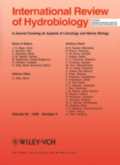|
MARC GERHARD and MICHAEL REICH |
|
University of
Marburg, Faculty of Biology, departement of Nature
Conservation, |
|
Restoration of
Streams with Large Wood: |
|
key words: large woody debris, stream restoration, channel morphology, microhabitats, riparian zone |
|
Abstract |
|
Large wood was added to regulated an straightened reaches of two third-order streams in Central Germany; the Jossklein and the Lüder. In the Jossklein, the wood was a by-product of the forest management in the floodplain and accumulated in the channel during peak floods. In the the Lüder, logs were built-in as deflectors in regular intervals and fixed within the stream bank. In the Jossklein, the addition of large wood improved the channel morphology within four years. The variation in channel width and depth was considerably larger than in a regulated section. The extension of the riparian zone, especially of the semiaquatic gravel and sand bars was strongly correlated with the amount of large wood that accumulated in the single sections. The number of microhabitats and their patchiness on the stream bottom was higher in restored sections, as well as the density of macroinvertebrates and the species number. In the Lüder, some of address observed trends were similar, but not that clear. This differences can be explained by higher amounts of LWD in the Jossklein, organized in dynamic debris dams situated above the water level at low flow, in contrast to the single stacks of logs at the Lüder, situated as stable deflectors within the low flow water level. |
|
* present adress |
|
|
|
[Startseite]
[Sitemap] [english] |
